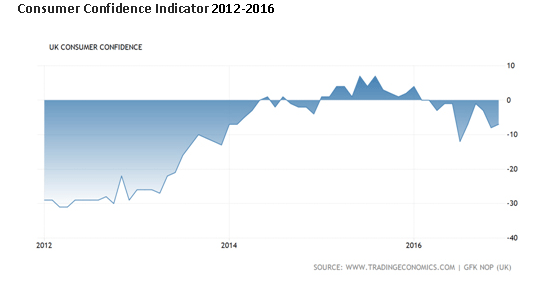Retail, eCommerce and Brexit in 2017
As we put to bed the mayhem of 2016, it has never been more important to thoroughly research the potential changes in retail in the UK. Before we get stuck into our Brexit, here’s a few stats for starters:
- £358 billion was the total value of UK retail sales in 20161
- Estimates of the quantity bought in retail sales increased by 4.3% (December 2016 v December 2015)2
- Retail sales fell by 1.9% in December 2016 compared with November 2016.2
- 12% of retail sales were made online1

Brexit – the Pound and the Big Risks
The driving force behind UK retail trends both on and offline in 2017 is of course Brexit. The fluctuation of the pound has been driving up prices at the same time, retail is more focused around sales and competitive discounting than ever. In 2016 Black Friday and Cyber Monday dominated the retail calendar once again, with a trend of November taking a larger proportion of holiday sales.
The electronics industry is one area of retail that has already seen challenges with online sales growth down -8.5% in January and the average basket tumbling. Subsequently big name electronics brands like Sonos, Microsoft and Apple among others have recently announced big price hikes of 20%3.

Will other sectors run into similar issues and be forced into a similar price hike? It’s almost impossible to predict how the pound will fluctuate in 2017, however, there are some outcomes of Brexit that we’re able to assess more accurately…
Consumer confidence
Retail sales in 2016 rose by roughly 2.1% and GDP around 2.2%4 even after the referendum results, which shows that consumer confidence was not affected too negatively.
Early predictions for 2017 are also looking positive with consumer confidence appearing much higher than it was just a few years ago.

The research also shows that consumer confidence has fluctuated considerably in recent months, indicating a significant shift towards variable consumer confidence trends.
In the face of global political uncertainty consumers are optimistic but vigilant and consumer confidence can change quickly affecting retail spend.
Geoblocking and Brexit
Geoblocking is a term for the system used to restrict cross border sales. Geoblocking laws are intended to restrict competition by preventing low cost providers from other territories and capitalising on the promotion and brand building of a local retailer.

Current geoblocking laws are changing under the European Commission’s Digital Single Market initiative, which looks to reduce geoblocking restrictions among the single market in the EU. This would increase price competition online, however, the UK’s separation from the EU provides an opportunity for UK competition law to diverge from Europe’s.
This could mean that brands test new promotions, products etc. on the UK before launching in the EU, providing more choice for consumers. The biggest opportunity for UK retailers may be to raise prices without competition from Europe. This change could appear to mean increased prices for the consumer, but Professor Joshua Bamfield, Director of the Centre for Retail Research says “Leaving the EU means, in theory, that retailers can buy in the cheapest markets,” he says. “Tariffs that the UK imposes on imports may be lower than the EU ones or even zero – in food imports, for example. Every retailer needs to analyse what this new freedom will mean for them and start creating new supply chains. Of course if we end up still in the single market, this will not be possible (probably).”
These new opportunities in UK competition law and potential ways to safeguard against European competition, need to be thoroughly researched by UK retailers.
What the eCommerce Customer Wants in 2017
With uncertainty ahead for the retail eCommerce industry, never has it been more important to run a tight ship with your digital marketing. There’s enough external factors beyond your control that may cause consumers not to buy from you, so make sure your internal strategy is on point. Get these basics right:
- A fast and mobile-optimised website
- Offer a selection of payment methods to suit everyone (Apple Pay, PayPal, AliPay, Boku and more)
- Offer the slickest delivery possible, customers are moving from wanting to expecting next day delivery, with same day delivery now also being available for certain locations and products
With the public having a more changeable attitude to shopping than ever before, companies need to spend time looking at the customer buying journey and how they can be present and available in key micro-moments in 2017.
Thanks for reading
If you enjoyed this post follow more of my contributions to the ThoughtShift blog for more industry stats and consumer trends. Why not sign up to our guest list email and get all the latest blogs delivered straight to you.
